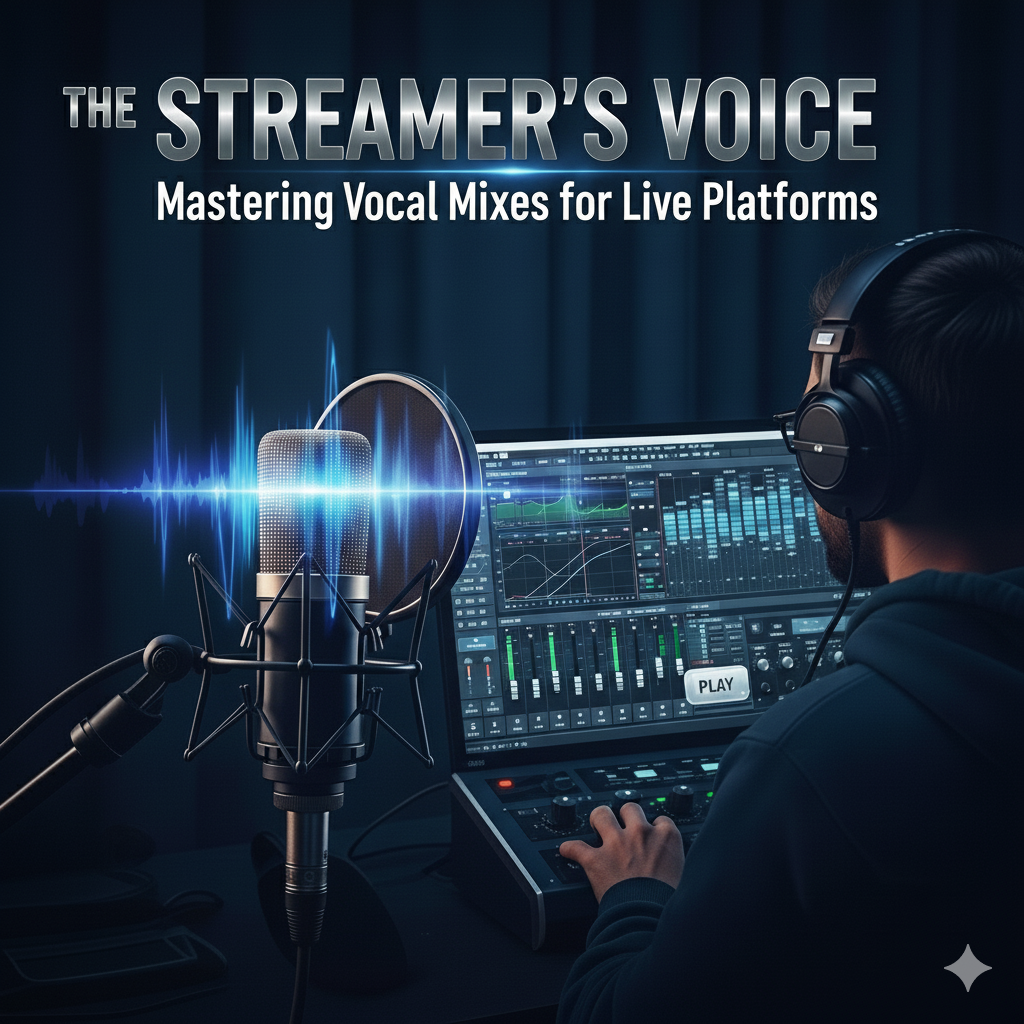In today’s streaming-first music industry, your mix isn’t just competing with local peers—it’s stacked up against the biggest records in the world. With Spotify, Apple Music, Tidal, and YouTube setting loudness standards and listeners consuming music on everything from high-end headphones to phone speakers, vocal mixes have to translate everywhere. Vocals drive connection, and for streaming platforms, clarity, punch, and consistency are essential.
Below, we’ll explore the fundamentals of mixing vocals for streaming platforms, then highlight wisdom from three of the industry’s most respected engineers who have shaped chart-topping hits.
Why Streaming Changes the Approach to Mixing Vocals
Unlike CDs or radio, streaming platforms normalize playback volume using loudness units relative to full scale (LUFS). For example:
-
Spotify targets around -14 LUFS for its loudness normalization.
-
Apple Music (Sound Check) typically normalizes to -16 LUFS.
-
YouTube sits near -13 LUFS.
This means a mix that’s too loud can get turned down automatically, potentially losing punch and clarity. A mix that’s too quiet may sound lifeless compared to others. Vocals, as the centerpiece, need dynamic control and spectral balance that hold up whether normalization occurs or not.
Core Principles for Mixing Vocals for Streaming
1. Gain Staging and Headroom
Start with conservative levels. Keep vocal peaks around -6 dBFS before processing. This ensures there’s headroom for EQ, compression, and effects without clipping.
2. EQ for Clarity
-
Roll off unnecessary low-end below 80 Hz to eliminate rumble.
-
Presence lives in the 2–5 kHz range—boost carefully here to make vocals cut through streaming compression algorithms.
-
Add air around 10–15 kHz for sheen, but be mindful of sibilance on earbuds.
3. Compression for Consistency
Use a fast attack and medium release to control peaks, often in the 2–4 dB range of gain reduction. On streaming platforms, where listeners jump between tracks, even dynamics are key.
4. De-Essing for Translation
Sibilance exaggerated on earbuds or laptops can ruin a vocal. Use a de-esser tuned to 5–8 kHz to keep esses under control.
5. Reverb and Delay for Space
Streaming often favors tighter, modern mixes. Short plate reverbs or slap delays maintain presence without washing out vocals.
6. Mastering Considerations
Final vocals should sit comfortably in the master without distortion after normalization. Tools like EngineEars’ Dolby Atmos certification course emphasize how immersive mixes adapt across playback systems—a mindset useful even in stereo mixing for platforms.
Tips from Top Engineers
 1. Manny Marroquin (Kanye West, Rihanna, Alicia Keys)
1. Manny Marroquin (Kanye West, Rihanna, Alicia Keys)
Manny is known for lush, wide mixes with vocals that always feel alive. His advice on vocal EQ:
“You can’t just think about the vocal in isolation—you have to EQ it against the track. The trick is finding the pocket where the vocal sits naturally, then sculpting space around it.”
Translation for streaming: Prioritize subtractive EQ on competing instruments to make vocals pop without over-boosting.
2. Leslie Brathwaite (Cardi B’s Invasion of Privacy, Pharrell, Beyoncé)
A Grammy-winning engineer with decades of hit records, Leslie emphasizes dynamics:
“I try not to over-compress vocals. Streaming platforms already compress audio in different ways, so I let the vocal breathe but still keep it controlled. That balance makes it feel human.”
Translation for streaming: Use parallel compression to retain natural dynamics while achieving competitive loudness.
 3. Andrew Scheps (Adele, Red Hot Chili Peppers, Jay-Z)
3. Andrew Scheps (Adele, Red Hot Chili Peppers, Jay-Z)
Scheps is revered for bold mixing moves and vocal clarity. On processing vocals:
“I don’t EQ vocals in solo. The vocal has to work in the track. Soloed, it might sound strange, but in the context of the mix, it’s perfect.”
Translation for streaming: Always evaluate vocals against the full arrangement, especially considering normalization—solo perfection doesn’t guarantee platform-ready results.
The Streaming Mindset: Mix for Consistency Across Devices
-
Check mixes on multiple systems: car, AirPods, phone speakers, studio monitors.
-
Leave headroom for mastering: Avoid chasing loudness wars. Streaming services normalize volume anyway.
-
Think globally: Platforms distribute to millions—clarity and balance matter more than raw volume.
Closing Thoughts
Mixing vocals for streaming platforms isn’t about chasing loudness—it’s about clarity, consistency, and emotion that translates anywhere. By controlling dynamics, sculpting EQ, and respecting headroom, you’re building a mix that competes on today’s global stage.
And as Manny, Leslie, and Andrew remind us, the art of mixing is context, balance, and restraint. For engineers serious about future-proofing their craft, exploring immersive education like the EngineEars Dolby Atmos Certification Course can take your mixes from good to unforgettable.
